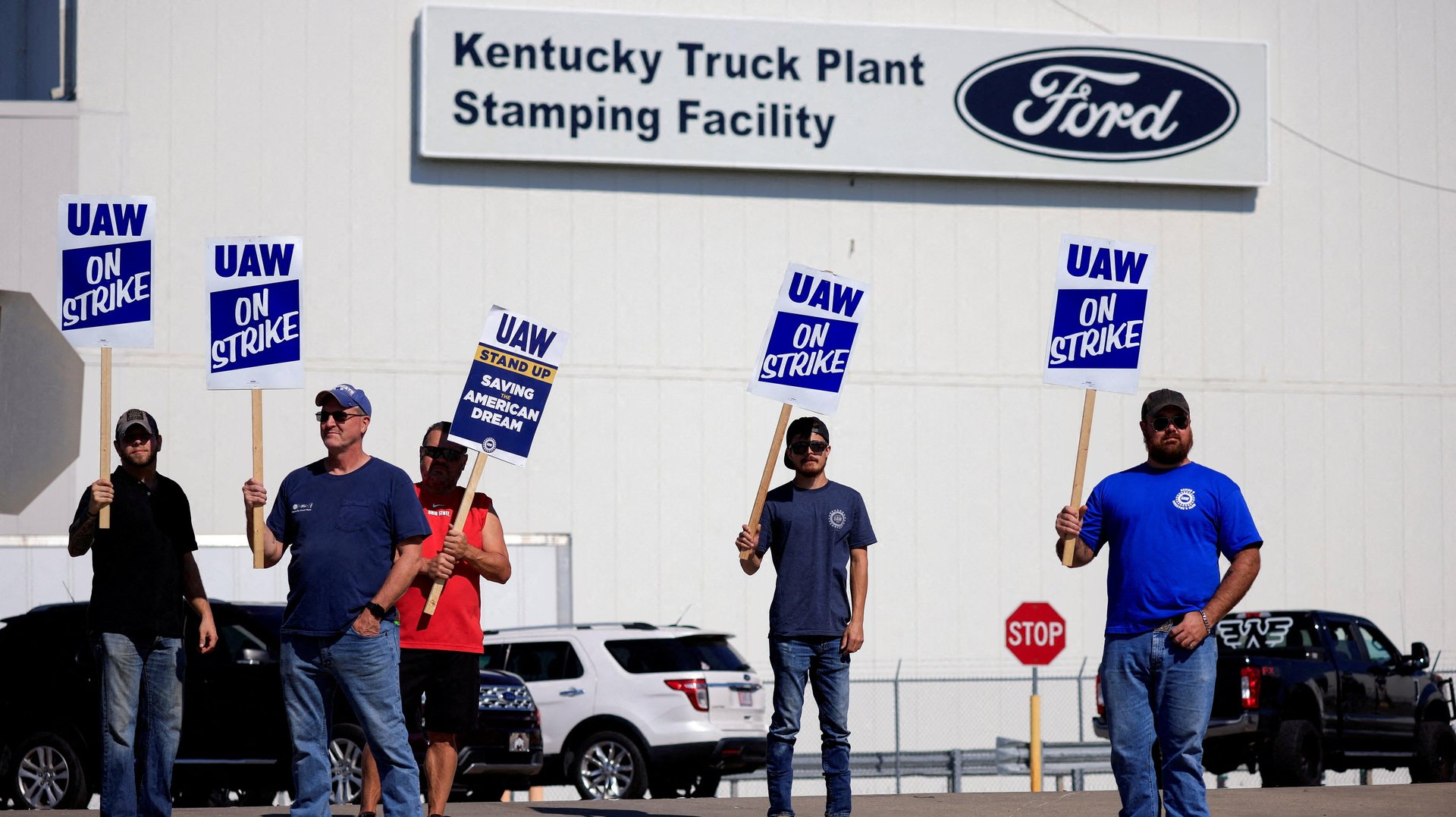After UAW's tentative deal with Ford, all eyes are on General Motors and Stellantis
Ford has agreed to a roughly 25% pay increase over four years—will GM and Stellantis follow suit?

After more than six weeks of walkouts, picketing, and fractured negotiations, the United Automobile Workers (UAW) and Ford Motor Company have reached a tentative agreement on a new labor contract.
Suggested Reading
The deal, announced yesterday (Oct. 25) includes a roughly 25% pay increase over four years, with an immediate 11% wage hike upon ratification. Moreover, it reinstates major benefits lost during the Great Recession, including cost-of-living allowances, and improves retirement plans. There’s also a historic right to strike over plant closures included in the terms—a first for the union.
Related Content
“We made history,” Shawn Fain, the union president, said in a Facebook livestream. “We told Ford to pony up, and they did.”
The accord will be put forth at a meeting in Detroit on Sunday, and if the council approves, the contract terms will be put to a vote with the company’s 57,000 union workers. Striking Ford workers will go back to work while the tentative agreement awaits ratification.
The agreement, which came a day before Ford was due to report earnings today (Oct. 25) “sets us on a new path to make things right at Ford, at the Big Three, and across the auto industry,” the union’s leaders said in their statement.
As the Stand Up strike, which started on Sept. 15, continues at two out of the Big Three—Stellantis and GM—there’s pressure on both of them to close a deal within the next 72 hours, according to Wedbush Securities analyst Daniel Ives. Shortly after the Ford deal was announced, both Stellantis and GM issued statements saying they’re “working” on reaching a deal and getting workers back to work “as soon as possible.”
Quotable: Record profits mean record contracts
“From the Great Lakes to the Gulf of Mexico, our members came together to tell the Big Three with one voice that record profits mean a record contract. Thanks to the power of our members on the picket line and the threat of more strikes to come, we have won the most lucrative agreement per member since Walter Reuther was president.”
—UAW Vice President Chuck Browning
Autoworker strikes at Ford, GM, and Stellantis, by the digits
40%: Wage hike the union had initially demanded, while the companies’ first offers started in the single digits
23%: Ford’s wage increase offer in early October, when it claimed to have reached the limit of what it could afford without hurting its business. GM and Stellantis have matched this, but will they top it?
8,700: Workers who walked out of Ford’s Kentucky Truck plant—the largest and most profitable Ford plant in the world—on Oct. 11
150%: Raise the lowest-paid workers at Ford will see over the life of the agreement, with some workers receiving an immediate 85% increase immediately upon ratification.
3,167: Strike-related layoffs Ford has made as of yesterday (Oct. 25)—the most out of the Big Three carmakers
6,800: Workers who walked out of Stellantis’s RAM 1500 pickup truck manufacturing facility in Michigan on Oct. 23
5,000: Workers who walked out of GM’s largest US plant in Arlington, Texas on Oct. 24
28,000: Total number of auto workers than remain on strike at GM and Stellantis
$3.1 billion: Third quarter profit reported by GM on Oct. 24, down 7% from a year ago, owing in part to the strike
Company of interest: Stellantis
Chrysler-parent Stellantis has an especially bumpy ride ahead. It could face a longer fight because of one point of contention that sets it apart from its rival firms: Its plans to close or sell 18 of its 35 US facilities, including factories and parts depots, which will result in big job losses.